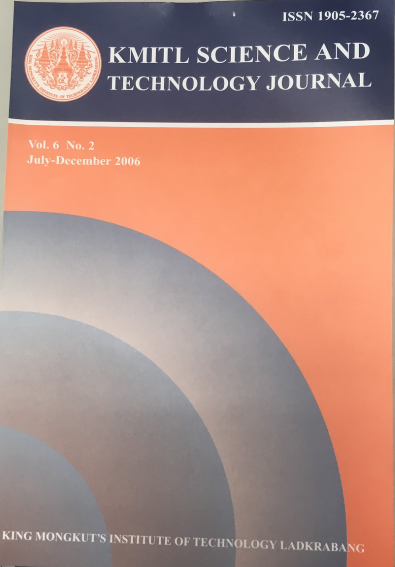TRANSMISSION MODEL FOR DENGURE DISEASE WITH AND WITHOUT THE EFFECT OF EXTRINSIC INCUBARION PERIOD
Main Article Content
Abstract
Dengue disease is transmitted to the human by biting of the infected Aedes Aegypti. It can be found in the tropical regions of the world. There are four serotypes of dengue virus, namely DEN-1, DEN-2, DEN-3 and DEN-4. Because the length of the extrinsic incubation period (EIP) of the dengue virus while it is in the mosquito becomes longer as the mean daily temperature is lowered, this should effect the transmission of dengue disease. In this study, we use mathematical models to study the behavior of the transmission of dengue disease. We compare the mathematical model of dengue disease (without the effect of EIP) and the modified mathematical model of dengue disease (with the effect of EIP). We apply standard dynamic analysis to both mathematical models. Numerical results are shown for the two models. We found that dynamic behavior of endemic state changes while the influence of the seasonal variation of the EIP becomes stronger.
Keywords: dengue disease, mathematical model, SIR model, extrinsic incubation period.
Corresponding author: E-mail: kppuntan@kmitl.ac.th
Article Details
Copyright Transfer Statement
The copyright of this article is transferred to Current Applied Science and Technology journal with effect if and when the article is accepted for publication. The copyright transfer covers the exclusive right to reproduce and distribute the article, including reprints, translations, photographic reproductions, electronic form (offline, online) or any other reproductions of similar nature.
The author warrants that this contribution is original and that he/she has full power to make this grant. The author signs for and accepts responsibility for releasing this material on behalf of any and all co-authors.
Here is the link for download: Copyright transfer form.pdf
References
[2] Kuno, G. 1995 Review of the factors modulating dengue transmission. Epidemiology Review, 17, 321-335.
[3] Gubler, D.J. 1998 Dengue and dengue hemorrhagic fever. Clinical Microbiology Review, 11, 450-496.
[4] esteva, L. and Vargas, C. 1998 Analysis of a dengue disease transmission model. Mathematical Biosciences, 150, 131-151.
[5] Robert, M. 1973 Stability and complexity in model ecosystem, Princeton University Press.
[6] Hethcote, H.W. 2000 The Mathematics of infectious diseases. Siam Review, 42, 599-653.


